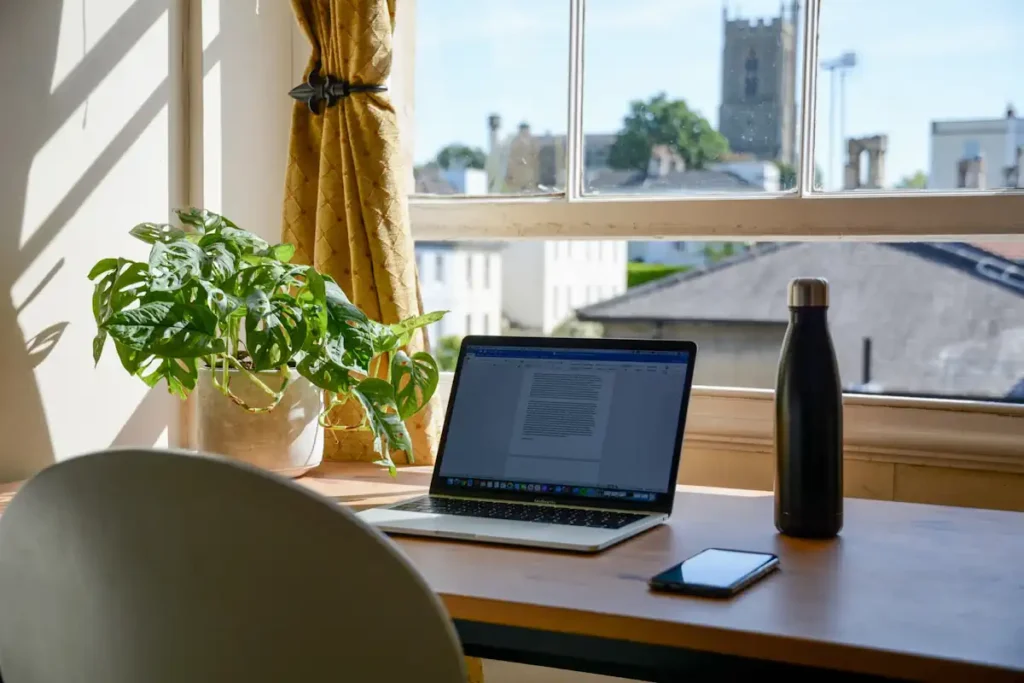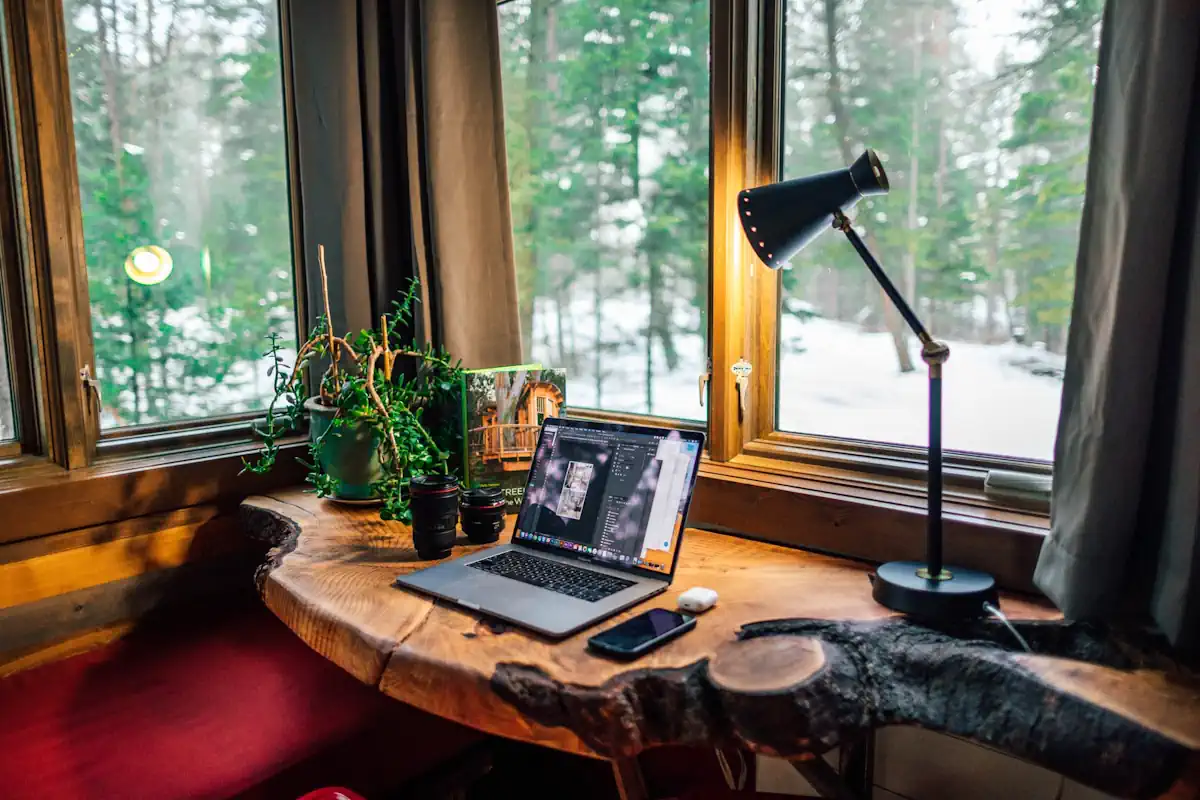Your home office environment directly impacts your focus, motivation, and overall work performance. A well-designed workspace does more than just look good—it creates the right atmosphere for sustained productivity and professional success. Whether you’re working from home full-time or need a dedicated space for personal projects, transforming your office aesthetic can make a significant difference in how you feel and perform throughout the day.
Start with Strategic Lighting
Good lighting forms the foundation of any productive workspace. Natural light remains the gold standard, so position your desk near a window whenever possible. Natural light reduces eye strain, boosts mood, and helps maintain your circadian rhythm during long work sessions.
When natural light isn’t sufficient, layer your artificial lighting thoughtfully. Combine overhead lighting with task lighting like a quality desk lamp. Avoid harsh fluorescent bulbs that create glare and opt for LED lights with adjustable brightness settings. Warm white light works well for general illumination, while cooler white light can enhance focus during detailed tasks.
Consider the direction of your lighting sources too. Light should come from the side or behind your computer screen rather than directly in front of it to minimize screen glare and shadows on your workspace.
Choose Colors That Enhance Focus
Color psychology plays a crucial role in productivity and mood. The colors surrounding you can either energize your mind or create unwanted distractions. Blue tones promote focus and mental clarity, making them excellent choices for walls or accent pieces. Green provides a calming influence that reduces eye fatigue, especially helpful if you spend hours looking at screens.
Neutral colors like soft grays, beiges, and whites create a clean, professional backdrop that won’t compete with your work. These colors also reflect light well, making your space feel larger and brighter. If you prefer more personality in your space, use vibrant colors sparingly through artwork, plants, or small decorative items rather than overwhelming wall colors.
Avoid overly stimulating colors like bright red or orange in large quantities, as these can create restlessness and make concentration more difficult during extended work periods.
Optimize Your Furniture Layout
The arrangement of your furniture significantly impacts both the visual appeal and functionality of your home office. Start by positioning your desk to face the room’s entrance when possible. This arrangement, based on feng shui principles, creates a sense of command and control over your space while preventing the unsettling feeling of having your back to the door.
Ensure adequate clearance around your furniture for easy movement. Cramped spaces create visual chaos and physical discomfort that can distract from work tasks. If your office doubles as another room, use furniture placement to create clear boundaries between your work area and other activities.
Consider the scale of your furniture relative to your room size. Oversized pieces in small spaces feel overwhelming, while tiny furniture in large rooms appears lost and insignificant. Choose pieces that complement your space proportionally.
Add Air Circulation for Comfort
Proper air circulation often gets overlooked in office design, but it’s essential for maintaining comfort and focus. Stuffy, stagnant air leads to drowsiness and decreased cognitive performance. If your home office has high ceilings, cathedral ceiling fans by Hunterfan.com can provide excellent air movement while adding an elegant architectural element to your space.
Ceiling fans help distribute conditioned air more evenly throughout the room, reducing hot spots and creating a more comfortable working environment. During warmer months, the gentle breeze from overhead fans can make the space feel several degrees cooler without adjusting the thermostat.
Position fans to create subtle air movement rather than strong drafts that might scatter papers or create noise distractions. The gentle circulation will keep you alert and comfortable throughout your workday.
Incorporate Natural Elements
Bringing nature indoors has proven benefits for productivity, stress reduction, and overall well-being. Plants not only improve air quality but also provide visual interest and a connection to the natural world during indoor work sessions.
Choose low-maintenance plants that thrive in your office’s lighting conditions. Snake plants, pothos, and ZZ plants tolerate various light levels and require minimal care. Place larger plants in corners or near windows, and use smaller plants on shelves or your desk for visual variety.
Natural materials like wood, stone, or bamboo add warmth and texture to your space. A wooden desk, stone paperweight, or bamboo organizers can introduce these elements without major renovations.
Minimize Visual Clutter
A cluttered workspace creates a cluttered mind. Visual chaos from scattered papers, tangled cables, and miscellaneous items constantly competes for your attention and mental energy. Implement storage solutions that keep necessary items accessible but out of sight.
Use drawer organizers, file systems, and storage boxes to contain office supplies. Route cables behind your desk or use cable management solutions to eliminate the visual distraction of tangled wires. Keep your desk surface clear except for items you use daily.
Apply the “one touch” rule for papers and documents—handle each item once by immediately filing, acting on, or discarding it rather than letting it accumulate in piles.
Personalize Thoughtfully
While maintaining a professional atmosphere, incorporate personal elements that inspire and motivate you. A few meaningful photographs, artwork that resonates with your goals, or objects that represent your achievements can boost morale and create emotional connection to your space.
Avoid over-personalizing with too many decorative items that might become distracting. Choose pieces that serve dual purposes when possible, like a beautiful clock that also provides functional timekeeping or an inspiring quote that doubles as wall art.

Create Defined Zones
Even in small spaces, creating distinct zones helps organize both the visual and functional aspects of your office. Designate specific areas for computer work, reading, storage, and brief relaxation or thinking time.
Use area rugs, different lighting, or furniture arrangement to subtly define these zones without requiring walls or major structural changes. This organization helps your brain shift between different types of work tasks more effectively.
Maintain Your Improved Space
Once you’ve enhanced your home office appearance, maintain these improvements through regular cleaning and organizing routines. Schedule weekly tidying sessions to prevent clutter from accumulating again. Dust surfaces, wipe down electronics, and refresh any plants to keep your space looking and feeling optimal.
Your improved home office environment will support better focus, increased motivation, and enhanced productivity throughout your work-from-home journey.
